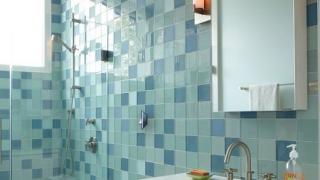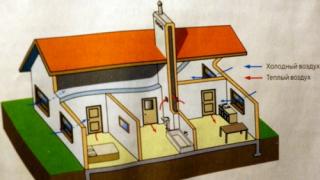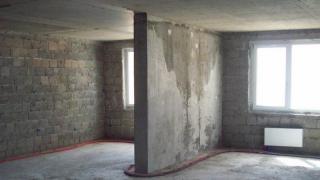Among the huge number of models of boilers on the market, it is quite difficult to decide on the choice of a suitable unit. How to choose the right water heater among this multitude?
Before choosing a boiler, you need to decide on your needs, and think about what needs the unit will be used for. All devices are divided into several types:
- electric, flow type;
- electric storage type;
- flow gas;
- storage gas;
- devices of indirect type.
Electric flow units
A distinctive feature of flowing electric water heaters is their compact and easy to install. This is ideal for a country house. Also, such a unit is easy to place in the bathroom, in the kitchen cabinet or under the sink.
The water in this device is heated by a built-in powerful heating element located in a small tank through which the liquid passes. When water comes into contact with the heating element, it quickly heats up and goes to the place of consumption. The only drawback of such boilers is that they have more power up to 8 kW and above: not every wiring in the house can withstand such a load. Therefore, for the flow unit, it is necessary to pull a separate cable from the electrical panel, and select the wire cross-section taking into account the load in a particular situation.
The disadvantages can also be attributed to the high consumption of electricity.
Electric storage boilers
This is the most common and popular type of device. The choice of such a water heater for an apartment can be considered the best option. An electric storage water heater not only heats the liquid to the required temperature, but also keeps the water hot for a long time, like in a thermos. Heat is retained by thick thermal insulation between the reservoir and the external tank of the device. Heated water is enough for use at several points at the same time. As a heat source in the unit, a heating element (tubular electric heater) is used. Warm water rises and exits to the consumer through a drain pipe, the fence of which is located in the upper part.
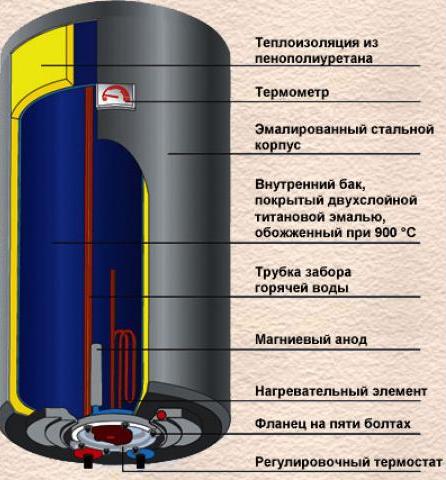
For storage devices, there are several recommendations on how to choose the right boiler, based on design features:
- tank material;
- types of heating elements - “wet” and “dry”.
Inner tank material
Modern boilers are equipped with an internal tank with glass-ceramic coating. Such a coating protects the tank from corrosion, but is very sensitive to temperature changes, as a result of which microcracks can form. But there are also devices with containers made of of stainless steel, or from it, but covered with a layer of titanium enamel. Since water is constantly in the tank, corrosion of the welds is inevitable over time. To extend the service life of the internal tanks, the units are equipped with magnesium anodes(metal rods coated with magnesium). Therefore, before choosing a water heater, pay attention to the material of the tank and its internal coating.
Considering that models with stainless steel tanks are guaranteed for 7-10 years, then the choice of such a water heater for an apartment is preferable.
Varieties of heating elements
“Wet” heater looks like a normal kettle. It consists of a copper tube, into which a nichrome spiral is embedded, filled with a dielectric.
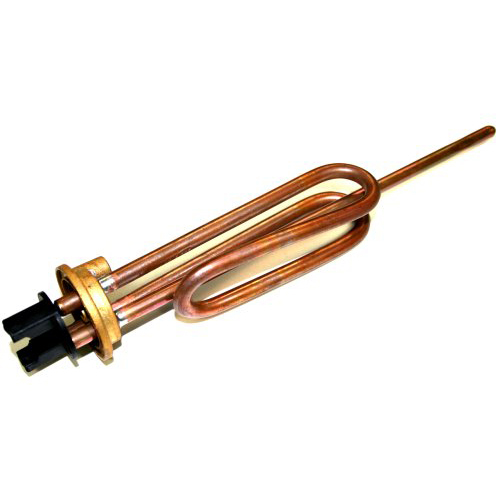
During operation of the heater, as in the case of a boiler, the accumulation of scale is inevitable. And if the water in the line has increased hardness, then the surface of the tube will very quickly overgrow with plaque, as a result of which heat transfer will be lost. The heating element will start to overheat, and eventually burn out. Consequently, in areas where water has high hardness indicators, it is not recommended to install boilers with open heaters. Therefore, before choosing an electric boiler for an apartment, you should consider the chemical composition of the water. In addition, the exposed parts of the heater enter into a galvanic reaction with the internal tank, from which it is subjected to electrochemical destruction.
"Dry" heating elements have no contact with the liquid in the tank. They can be different in design, but they are united by the fact that the heaters are installed in special tubes soldered to the flange, or a protective flask, also installed on the flange, which is hermetically attached to the bottom of the tank.
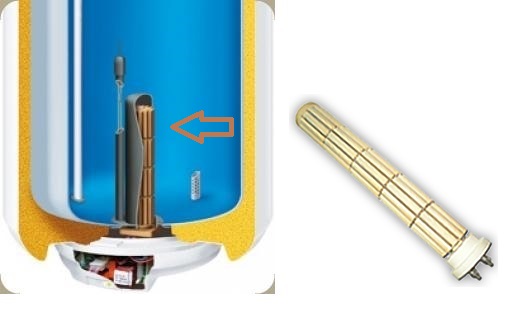
As a result, boilers with “dry” heaters have a longer service life when working with hard water. Although scale is also collected on protective covers, it takes more time compared to open heating elements. Therefore, preventive maintenance and descaling is required every 2 years. Also due to reduction of electrochemical corrosion, the internal tanks of the devices are longer in working order, provided that the magnesium anode has not been exhausted (it is required to check during maintenance).
Flow gas
Flow type gas heaters (geysers) are most often used in the private sector, where there is a gas and water supply and there is a chimney in the house. But before you choose a boiler for the house, in this case gas, you should consider that you will have to contact the gas service for obtaining permission, and then to connect the device. It will also be necessary to make wiring for water.
The liquid in such a device is heated by passing it through a heat exchanger located in the gas column housing. In turn, the heat exchanger is heated by the gas burning in the chamber.
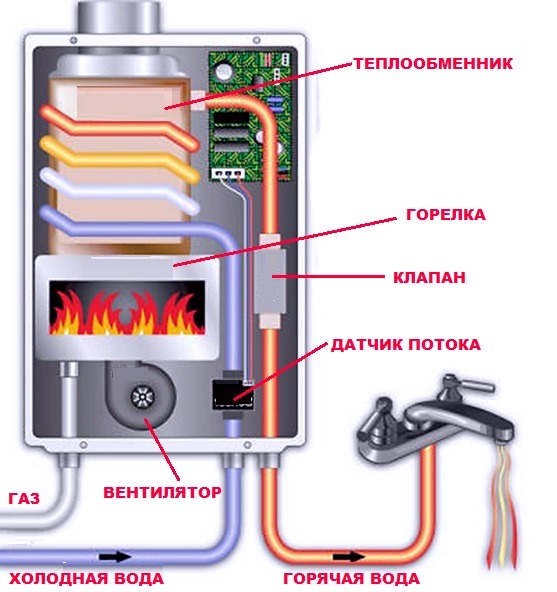
Accumulative gas
As an alternative to a gas water heater for a private house, you can purchase a storage gas unit. The only difference between them is that there is a container for liquid in the water heater (accumulative). The water in the tank is heated in the same way, from the combustion of gas. heating temperature thermostat controls, which turns off the gas supply if the liquid has heated up to the desired temperature.
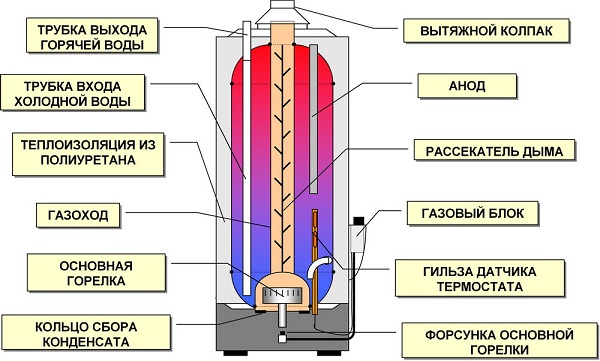
The advantage of such a device over a flow one is that heated water is constantly present in the system, and it is not necessary to turn on the heating column every time, which ensures more economical gas consumption.
Indirect heating units
The indirect heating device does not have built-in heat sources. The water in the tank is heated from external sources. Most often, liquid from the heating system is used as a source, which, passing through the heat exchanger (coil), gives off energy to the water in the tank.
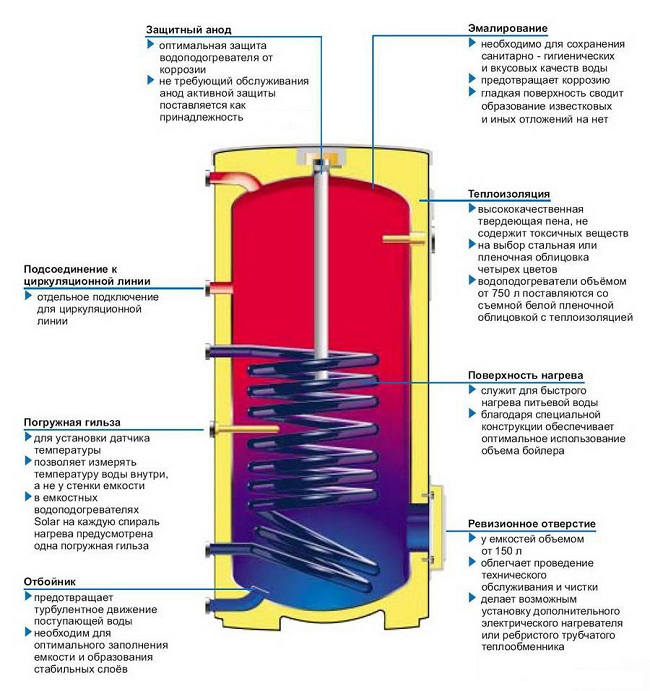
Due to the use of external heat carriers, the choice of an indirect heating boiler for the house will be an economical option, since gas and electricity are not consumed. But it should be noted that this type of device has a high cost. And their volume can reach up to 1000 liters. It is rational to use an indirect heating boiler in large houses (if the number of households is more than 6 people), institutions, cafes, canteens and restaurants, where a considerable consumption of hot water is expected.
In the indirect, it is possible to install a heating element, after which it turns into a storage electric device.
Unit power
From what power the heater is used in the device, the time of heating the liquid in the tank to the required indicators depends. Before you choose an electric water heater, you should know what is leading in this matter gas heating devices. They tend to heat water 2 times faster than analogues with heating elements. Not to mention indirect water heaters, the liquid in which heats up even more slowly.
In an electric storage water heater, 2 heating elements of lesser power are often built in to increase the speed of operation, or one, but powerful. The total recommended power should be 2 kW. It takes an average of 2 to 4 hours to heat water to 50 degrees, depending on the volume of the tank. This means that low-power devices should be bought if the need for hot water is not high.
Water heater tank volume
What water heater, and with what volume to choose for the house? Addressing this issue should be a top priority. Many people make the mistake of choosing a large-volume unit when buying, guided by the idea “the more the better”. But, in fact, you will receive an unjustified consumption of electricity, since the device will spend more time heating water than a similar one of a smaller size. In addition, the dimensions of such a device will take up more space, and therefore you should be guided by your needs. The figures below show approximate indicators that should be followed when choosing the size of the unit. They depend on how many people will use hot water.
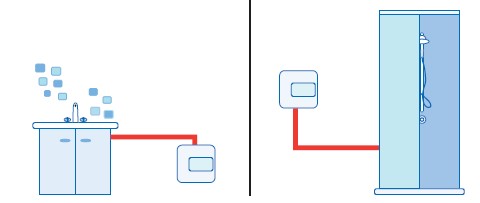
Also, for a large family of 7-8 people, if it is a private house, it would be more rational to choose an indirect heating (accumulative) water heater. Among floor models you can choose a unit with the desired capacity, capable of providing hot water to the whole family. Buying a home indirect heating device can solve the question, which water heater is better to choose for a private house? For a better understanding of how much water is consumed per day, you can use the table below.
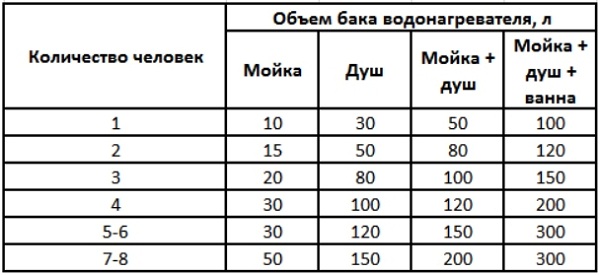
Water heater shape
The shape of storage boilers are: cylindrical and square (flat).
Cylindrical
Most buyers, when choosing a water heater for an apartment, opt for cylindrical models for vertical placement. They have these advantages:
- devices are compact and do not take up much space;
- the cylindrical shape has the maximum contact area.
There are also narrow devices, in the form of a cylinder, the so-called slim water heaters(from the English "slim" - thin). They differ in diameter (from 38 cm and less) from standard units with a circumference of 45-52 cm. At the same time, in order to increase capacity, the manufacturer increased their height.
The slim unit is very convenient in small-sized apartments of an old building, in which bathrooms are very cramped and space in the kitchen is limited. This parameter is convincing in order to choose a small diameter electric water heater for such housing. However, it can handle the same power as the standard one and has the same capacity by converting usable space into height.
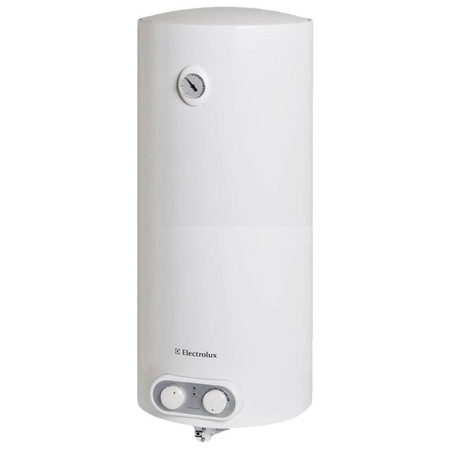
The disadvantage of slim units is that some manufacturers, in order to increase the volume of the internal tank without increasing the outer diameter, reduce the thermal insulation layer. Because of this, the liquid in the container cools faster, and the device is forced to turn on more often.
flat
Flat models are no different from slims in their parameters. The storage water heater of a flat shape takes up little space, has a pleasant design, and fits well into the interior. Because such devices hide in lockers in the kitchen or in the bathroom, you can easily choose the thickness of the device required for this.
![]()
There are also models for horizontal placement. But the cost of such devices is higher than vertical ones. This placement allows you to maximize the use of free space, especially if it is limited to a small room.
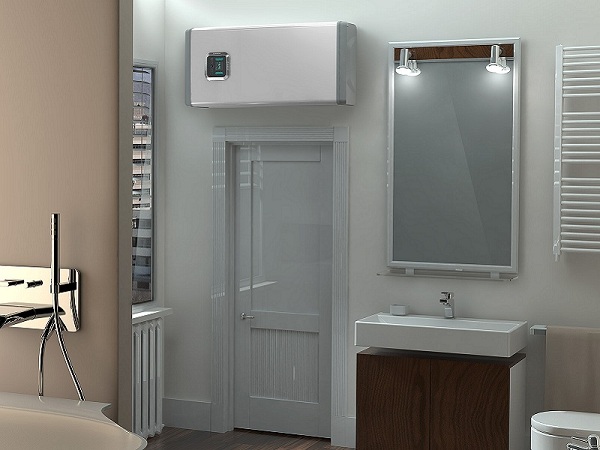
When choosing the right unit for home use, it is important to find a compromise based on rationality, so as not to compromise convenience and financial savings.

